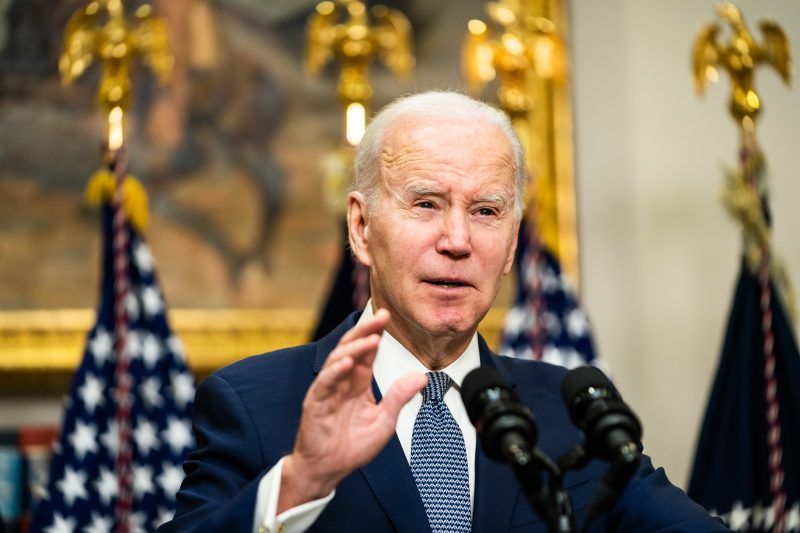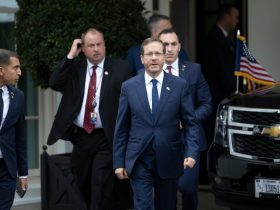In the end, blame for the massive economic crisis 15 years ago fell on financial institutions. There were a lot of contributing factors, certainly, and the scale of the disaster was global, not simply American. But wildly risky practices undertaken by greedy banks and other financial institutions were a primary cause of the crisis. Overlap that with the fact that bankers and Wall Street make a much better scapegoat than average Americans who assumed iffy mortgages, and you see why politicians and Americans in general identified banks as almost solely culpable for what happened.
For the federal government, this was a problem. Shoring up the financial system meant necessarily shoring up institutions at the center of that system: banks. So the government worked to backstop those institutions, including by ensuring that depositors at those banks wouldn’t be wiped out. To average Americans, though, the response to the crisis was to give tax money to the firms that caused the crisis in the first place. Politicians and other critics soon realized they had an effective cudgel: The government had decided to bail out Wall Street.
This was a potent idea. The tea party movement that emerged in the wake of Barack Obama’s 2008 election as president — and Joe Biden’s election as vice president — was framed as a response to how the government spent tax dollars. This included bailouts for big banks but was more commonly focused on programs that helped low-income people of color and immigrants, a reflection of the broader insecurities of the movement’s proponents. In the 2010 elections, a sharp backlash against Democratic leadership in Washington, CBS News polling found that Americans were twice as likely to view support for the bailouts as a negative than a positive.
The backlash wasn’t only on the right. In 2011, a group of left-wing activists began Occupy Wall Street, an effort to draw attention to economic inequality and the outsize influence of money in politics — as demonstrated, in part, by the bailouts. While Democrats were less hostile to the bailout effort than Republicans (thanks in part to Obama’s taking office in early 2009), even 3 in 10 Democrats were happy to see a proposal that was aimed at helping faltering auto companies fail in December 2008, according to Gallup polling. Six in 10 Republicans agreed.
The rise of Donald Trump in 2015 and 2016, though, was a dramatic escalation of anti-elite rhetoric that included anti-bailout language. Trump repeatedly framed fights in Washington as being about Democrats wanting “bailouts”: His battle to upend the Affordable Care Act in mid-2017 was his pushing back against “bailouts” for insurers, for example. His arguments about spending in 2020, as the pandemic was underway, were often framed in similar partisan terms.
The Democrats are only interested in BAILING OUT their badly managed, high crime, Blue States. They are not interested in our workers or small businesses. Crazy Nancy will only do stimulus, which would be helpful, if we couple it with bailout money. Republican States are great!!!
— Donald J. Trump (@realDonaldTrump) September 22, 2020
One of the best distillations of the right’s view of “bailouts” came from John Neely Kennedy as he announced his bid for the Senate from Louisiana in 2016.
“Here’s what I see: too many undeserving people at the top getting bailouts and too many undeserving people at the bottom getting handouts,” Kennedy said. “And we in the middle get the bill.”
You’ll notice the subjectivity here, of course. In Trump’s 2020 tweet, we see the difference between “bailouts” for blue states — bad — and stimulus, helpful. That same year, the government was heavily involved in boosting the welfare of Americans broadly as a response to the coronavirus. Polling from Fox News found that a years-long trend of Americans preferring that the government leave them alone had inverted, with Americans saying they wanted government to lend them a hand. Even among Republicans, nearly as many respondents said they wanted help from the government than for government to do nothing. The benefit of having a centralized response to literal contagion was obvious, at least as the contagion spread. By 2022, with Biden now president, Republicans were again skeptical of governmental aid.
On Friday, Silicon Valley Bank failed and was taken over by the Federal Deposit Insurance Corporation (FDIC). The sudden collapse of an institution heavily focused on working with the venture capital community in California was largely a function of its exposure to interest rate hikes. The failure was hastened, though, by an avalanche of withdrawals from firms like right-wing activist-investor Peter Thiel’s Founders Fund. Suddenly, the federal government was faced with a significant test of its ability to contain panic about the banking system — and a test of the political will for aiding a bank like SVB.
It’s not only that SVB is a bank, institutions that never entirely regained public confidence after the financial crisis. It’s also that the bank was a fixture in Silicon Valley, which has emerged as a punching bag for politicians on the right, and that it involved investors like Thiel and Elon Musk ally David Sacks, individuals who are not viewed sympathetically on the left. There’s no political upside in offering (disliked) assistance to this (disliked) bank.
So, when the government announced on Sunday evening a series of steps meant to halt any contagion of bank runs, it came in a statement that repeatedly denied a bailout was underway.
“No losses associated with the resolution of Silicon Valley Bank will be borne by the taxpayer,” it read. Another institution, Signature Bank, would similarly be shut down and, again, “no losses will be borne by the taxpayer.” Instead, funds used to ensure that depositors didn’t lose money would “be recovered by a special assessment on banks, as required by law.” Investors in the banks would not be protected.
As Bloomberg News’s Joe Weisenthal noted on Monday, this isn’t actually much different from what the government did to backstop institutions during the financial crisis. But because that crisis led to a sense that the government was throwing cash at irresponsible bankers — a sense fostered by things like AIG offering bonuses to executives post-bailout — Biden and his team are eager to tamp down the idea that this is what’s happening.
“No losses — and this is an important point — no losses will be borne by the taxpayers,” Biden reiterated in brief comments about the situation on Monday. “Let me repeat that no losses will be borne by the taxpayers.” He added that there was a punitive element of the response: “The management of these banks will be fired. If the bank is taken over by FDIC, the people running the bank should not work there anymore.”
Biden saw firsthand how the response to the earlier crisis became an albatross in the first years of the Obama administration. Biden is also about 20 months away from a likely reelection contest, one expected to center on how he’s delivered on the economy. Having Americans think he prioritized aiding risk-taking bankers won’t help that.
As Republicans know, Vivek Ramaswamy, a long-shot contender for the GOP presidential nomination next year, already has an essay in the Wall Street Journal arguing that the government’s efforts to contain the problem does, in fact, constitute a bailout.
The argument is largely semantic, as so many recent fights have been. Is any government deployment of assets in the financial industry a bailout, or is a bailout only using tax dollars to help keep risky banks afloat? The term itself has expanded to become a vague condemnation of government assistance to financial institutions or other corporate failures. There’s an incentive for Biden to describe his administration’s actions as something other than that. There is a countervailing incentive for his opponents to slap the “bailout” label on anything and everything associated with the problem.
How politically damaging this is for Biden is likely to be determined by how much the situation escalates, if at all. If the damage is largely centered on Silicon Valley Bank and fails to touch Americans using other banks, any effort to attack Biden as bailing out banks will probably have a muted effect. If, however, this becomes something with widespread negative impacts, whatever the government does to work with the banks will introduce political risk.
In other words, the best way for Biden to avoid taking a political hit for “bailing out” this bank will probably be for his administration to move quickly to limit the damage — to intervene in precisely the way that exposes the risk of being attacked for engaging in a bailout. What’s more, the administration wants to do so while actively blunting the idea that a bailout is happening, at least when the term is understood as the government throwing tax dollars at a bank.
The challenge here is broader than “bailouts.” The challenge is that the federal government has a role to play in addressing national problems, but that government activism, when undertaken by Democratic administrations, has been framed by the right as anathema. So far, Biden has managed to expand the role of government without huge political blowback. On this particularly fraught example of governmental action, he’ll have to walk a much narrower path.








